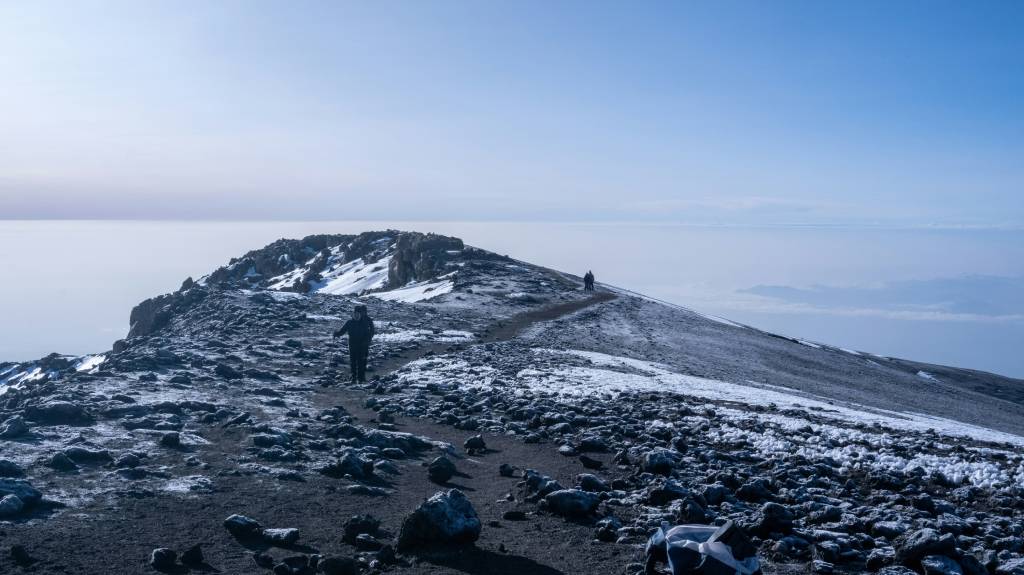Climbing Mount Kilimanjaro, the Roof of Africa, is a challenging goal. For most climbers, the biggest worry isn’t the physical fitness needed, but the risk of Acute Mountain Sickness (AMS), also known as altitude sickness. The secret to reaching the 5,895-meter (19,341-foot) summit safely is simple: take it slow.
At TUPAE ADVENTURES, we strongly recommend the Northern Circuit Route for any climber who wants to give themselves the absolute best chance of success. This route has the highest summit rate on the mountain because it is built entirely around the science of safe and effective acclimatization.
1. The Power of Time: The 9-Day Advantage
The single most important factor for summit success is the time you spend on the mountain. Your body needs many days to slowly adjust to the thinner air.
The Northern Circuit is the longest route on Kilimanjaro, covering nearly 90 kilometers (55 miles) and requiring a full nine-day itinerary.
- More Days, Less Rush: Most popular routes are done in 6 or 7 days. The extra two or three days on the Northern Circuit allow your body crucial time to adapt. This slow, steady approach is the best defense against altitude sickness, which is the number one reason climbers have to turn back.
- The Best Success Rate: Because of this long duration, the Northern Circuit consistently boasts the highest success rate among all established routes, often achieving over 90% for climbers who choose the nine-day option.
2. The Golden Rule: Climb High, Sleep Low
For decades, mountain experts have used a strategy called “climb high, sleep low.” This means you hike up to a higher point during the day (to challenge your body) and then drop back down to a lower camp to sleep (to allow your body to recover with more oxygen).
The Northern Circuit is one of the best routes that follows this rule naturally:
- The Lava Tower Day: On one of the trek days, you climb up to the famous Lava Tower (over 4,600 meters) and spend some time there. Afterward, instead of staying at that high altitude, you descend to a lower camp like Moir Hut or Buffalo Camp for the night. This large drop in altitude is incredibly helpful for acclimatization and preparing you for the final summit push.
- Gradual Ascent Profile: Overall, the route avoids rapid, huge jumps in altitude from one camp to the next, which is what causes the most trouble for climbers on shorter, steeper routes.
3. Experience the Mountain from All Sides (360-Degree Views)
The Northern Circuit is unique because it is the only route that circles almost entirely around the mountain before the final ascent. This is why it is sometimes called the “Grand Traverse” or “360 Route.”
- The North Side: The northern slopes of Kilimanjaro are the most remote and rarely visited. This area is quieter, less crowded, and offers completely different, stunning views of the surrounding plains and the Kibo cone.
- Avoid the Crowds: Since it is the longest route, fewer people choose it. This means your campsites are peaceful, and your trek feels like a private adventure rather than a busy mountain trail. Less stress and less rush help your body focus on acclimatizing.
4. A Route for Every Climber
The Northern Circuit is the perfect choice for several types of climbers:
- First-Time Climbers: If this is your first high-altitude mountain, the nine-day itinerary is the safest choice to protect yourself from AMS and maximize your summit chances.
- Photographers and Nature Lovers: The full 360-degree view means you pass through all five of Kilimanjaro’s climate zones—from the lush rainforest where you can spot Colobus monkeys, to the arid alpine desert—offering endless photo opportunities and diverse scenery.
TUPAE ADVENTURES: Your Safety is Our Summit
Climbing a mountain like Kilimanjaro should never be rushed. At TUPAE ADVENTURES, we are local experts who know the mountain’s features by heart. When you book the Northern Circuit with us, you are choosing the safest path guided by professionals committed to your well-being.
Our standard for safety on the Northern Circuit includes:
- WFR-Certified Guides: All our head guides are certified Wilderness First Responders, trained to spot and treat altitude sickness symptoms early.
- Health Checks: We monitor your vital signs (pulse and blood oxygen saturation) twice a day to ensure your body is adapting safely.
- Quality Gear: We provide high-quality equipment, including oxygen tanks and first aid kits, carried by our expert, ethically-paid porter team.
If your dream is to stand on the Roof of Africa, choose the route that gives you the best chance of success.
Contact us today to start planning your Northern Circuit climb—the safest and most rewarding journey up Kilimanjaro.


